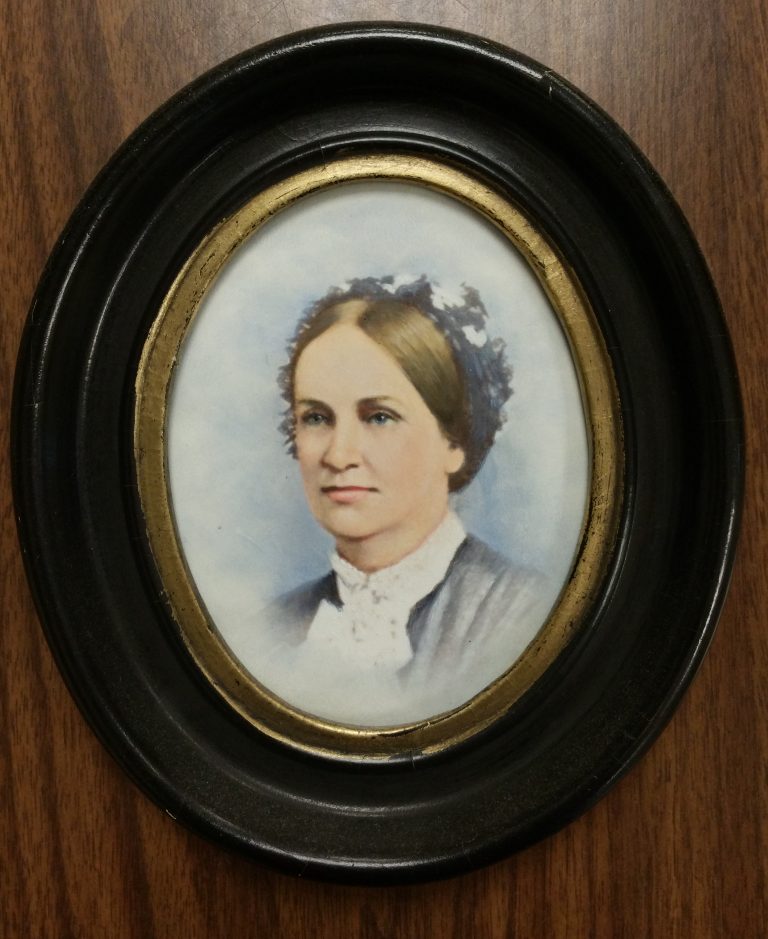This post was written by Alice Garner, a member of the Class of 2024, for an assignment in Dr. Devyn Spence Benson’s AFR 101: Introduction to Africana Studies class. For the past five years, the Africana Studies Department has collaborated with Davidson College Archives, Special Collections and Community to uncover the experiences of Black individuals at the college. Garner is an intended Psychology Major and possible Latin American Studies minor from Norwich, Vermont. Her interests include the intersection between the African diaspora and Latin American history and childhood developmental psychology.
Forced to uphold an innumerable set of standards, an ideal Southern lady was sculpted by the patriarchal society that surrounded her. In the 1860s, almost one in three North Carolinians were white slaveholders.[1] Although labor-intensive cash crops still played a staple role in the economy, many slaves served in white households. Mary Lacy, born in 1816 to a family of higher education, married Drury Lacy at age 33.[2] In 1855, her husband became President at Davidson College for five years. To pass free time and communicate with her close family, Lacy sent letters to her step-daughter, ‘Bess,’ from 1856 until 1859. Mary Lacy dedicated her time “garner[ing] respect in the private and public sphere” at her husband’s plantation who owned a family of slaves.[3] Cast in their husband’s shadow, women of this time were expected to be “gracious, fragile, and deferential to men whose protection [they were] dependent [upon].”[4] Southern housewives relied on slaves to uphold their bourgeoisie status in society during the 1860s. The objectifying treatment to the slaves, revealed in Lacy’s writing, attests to the ignorance and disrespect of these upper-class white women, the gender normalities of the time, and the role religion played in society. Although held to a high regard in the public sphere, the disrespect of the Lacy family to their slaves highlighted within this document, questions Davidson’s commitment to transparency through the honor code.

Lacy’s complete disregard to treat her slaves with basic respect is showcased in her letters by the pejorative language she used towards them. Enslaved peoples who worked within the household were commonly assigned jobs such as growing, preparing, and storing food and sewing.[5] “Little value [was] placed on [job] specialization,” yet this did not stop the slave-holding wives to label their servants—”maid,” “cook,” “nurse”—to categorize them.[6] Throughout Lacy’s letters, she refers to one of her servants as “Aunt,” a term for those of older age commonly used by white slave-holder wives.[7] These disrespectful names assigned to the slaves, implicate Lacy’s view—“incompetent, worthless, untidy, indolent, wasteful”—towards those who worked for her and the way in which she used these to make herself feel more competent.[8] In her letter on July 2, 1856, Lacy expresses her desire for Bess to “send round & get [her Zack]” (another slave).[9] Her phrasing dehumanizes the man, objectifying him as a form of transportation. Lacy writes to Bess about the process of finding a child they “could have bound” for “more reasonable terms,” referencing them as if they were products for sale, devaluing them as people.[10] When disappointed with the little girl they “expected to get,” Lacy brushed it off claiming that they would just have to “hunt for [another]” as there were a “great many to hire.”[11] “Hunt” is a term primarily used for animals and “great many to hire” makes it seem like those in the slave market are ‘desperate’ to be “hire[d].” Lacy creates a false reality for herself by stripping the slaves of their identity, allowing her to rise above and claim her wealthy status.
[1] Jeffery J. Crow, “Slavery” (University of North Carolina Press, 2006).
[2] Carlina Green et. al, “Introduction.” Mary Lacy Letters (Davidson: WordPress, 2017).
[3] Carlina Green et. al, “Slave Owning Women.” Mary Lacy Letters: (Davidson: WordPress, 2017).
[4] Elizabeth Fox-Genovese, “Black and White Women of the Old South.” Within the Plantation Household (The University of North Carolina Press, 1988), 104.
[5] Jacqueline Jones, Labor of Love, Labor of Sorrow: Black Women, Work, and the Family, from Slavery to the Present (New York: Basic Books, 2009), 29.
[6] Jones, 112.
[7] Carlina Green et. al, “August 6, 1856.” Mary Lacy Letters (Davidson: WordPress, 2017).
[8] Jones, 113.
[9] Carlina Green et. al, “July 2, 1856.” Mary Lacy Letters (Davidson: WordPress, 2017).
[10] Carlina Green et. al, “January 2, 1857.” Mary Lacy Letters (Davidson: WordPress, 2017).
[11] Carlina Green et. al, “December 12, 1858.”, “January 2, 1857.” Mary Lacy Letters (Davidson: WordPress, 2017).
This is the first post in a three-part series about Mary Lacy, the wife of Drury Lacy, the third President of Davidson College. In our collection, we are fortunate to retain a collection of Lacy Family Papers, which includes correspondence from Mary Lacy to her step-daughter Bess. In Spring 2017, Dr. Rose Stremlau’s History 306: “Women and Gender in U.S. History to 1870” class transcribed, annotated, and analyzed these letters. Their work can be found on this website. To view digitized items from the Lacy Family Papers, please explore Digital Davidson, our platform to view born-digital and digitized versions of archival materials, special collections, and college scholarship.

Speak Your Mind